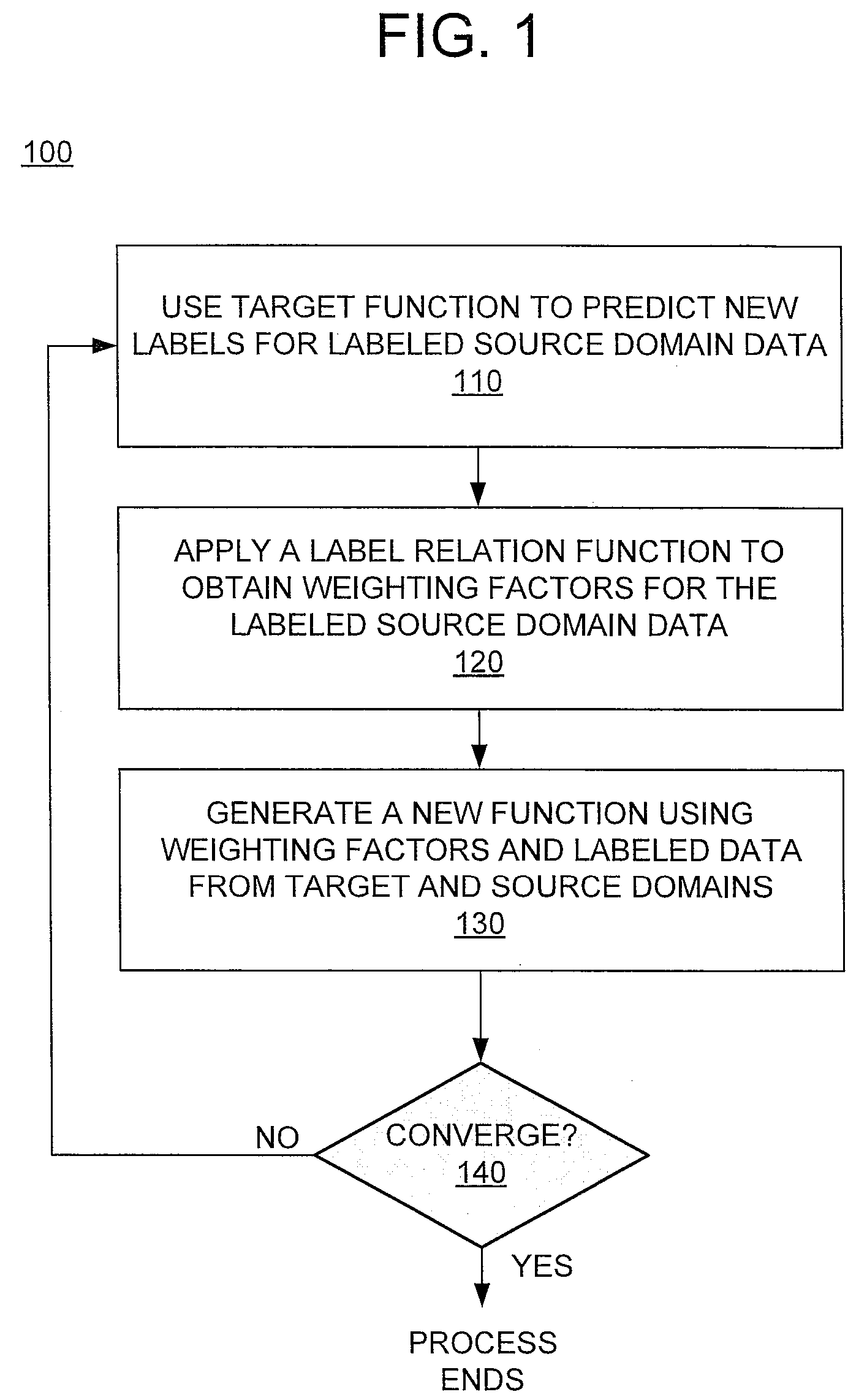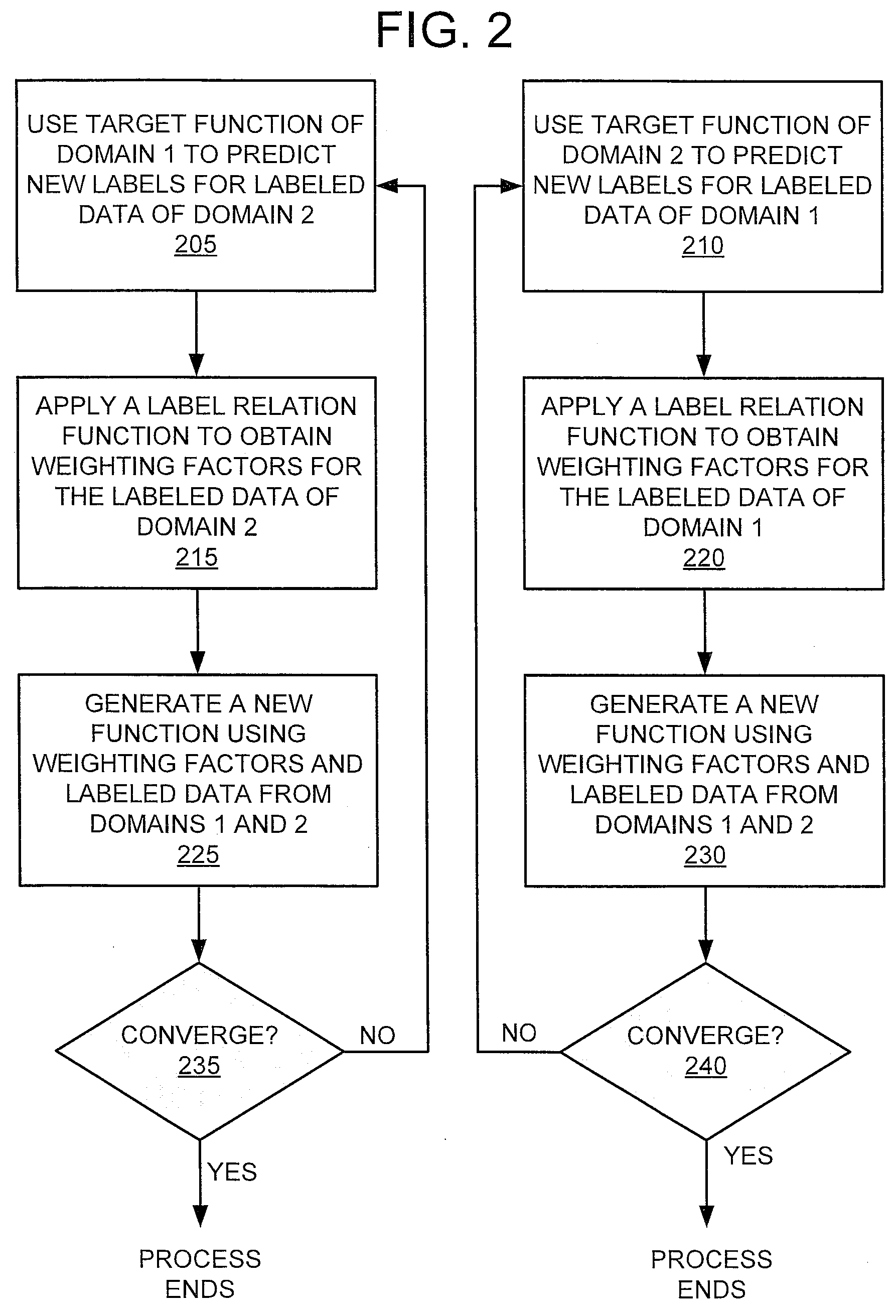System and method for cross domain learning for data augmentation
a cross-domain learning and data augmentation technology, applied in the field of cross-domain learning for data augmentation, can solve the problems of not having enough resources and human experts for a particular domain to create high quality, sufficient large training data sets for that domain, and not having enough resources and human experts for a particular domain
- Summary
- Abstract
- Description
- Claims
- Application Information
AI Technical Summary
Problems solved by technology
Method used
Image
Examples
Embodiment Construction
[0012]Frequently, large amounts of high-quality training data may exist for an application in a particular domain. For purposes of this disclosure, a domain having relatively large amounts of high-quality training data may be referred to as a source domain. On the other hand, high-quality training data may be relatively scarce for the same application in another domain. For purposes of this disclosure, a domain that has relatively little high-quality training data may be referred to as a target domain. Here, the term “application” refers to any data analysis task that is performed by a special purpose computing apparatus. High-quality training data for a source domain may be highly valuable if it could be used in a target domain for the same application. For instance, if relevance judgments in the English language could be used to train a model for other language(s), the scarcity of existing training data for those other languages may be overcome. However, this is merely an example ...
PUM
 Login to View More
Login to View More Abstract
Description
Claims
Application Information
 Login to View More
Login to View More - R&D
- Intellectual Property
- Life Sciences
- Materials
- Tech Scout
- Unparalleled Data Quality
- Higher Quality Content
- 60% Fewer Hallucinations
Browse by: Latest US Patents, China's latest patents, Technical Efficacy Thesaurus, Application Domain, Technology Topic, Popular Technical Reports.
© 2025 PatSnap. All rights reserved.Legal|Privacy policy|Modern Slavery Act Transparency Statement|Sitemap|About US| Contact US: help@patsnap.com



